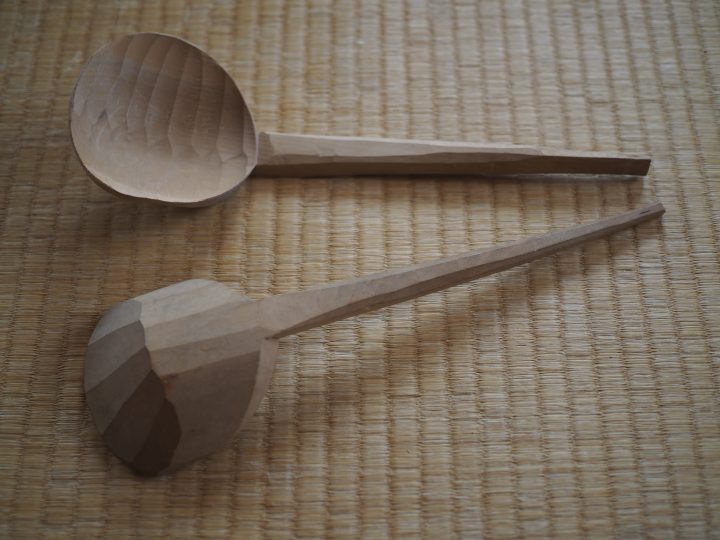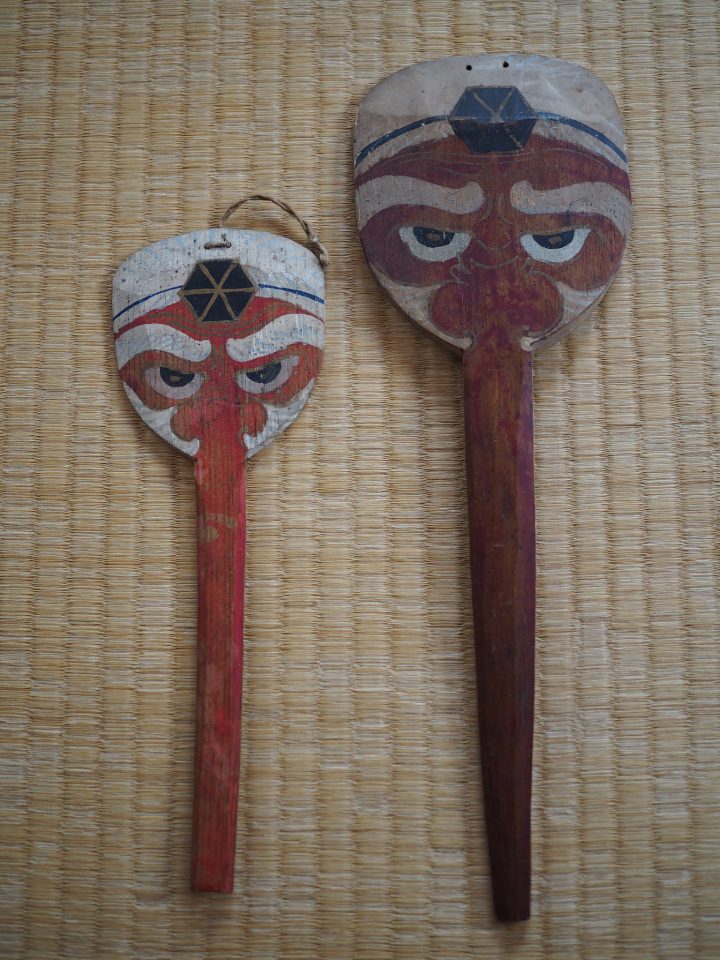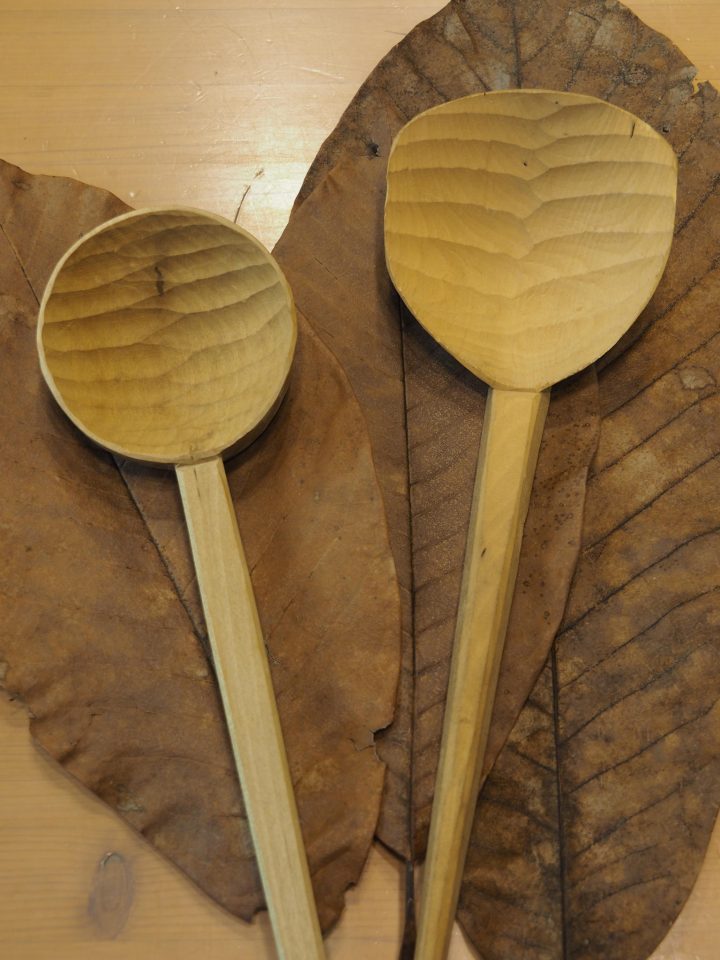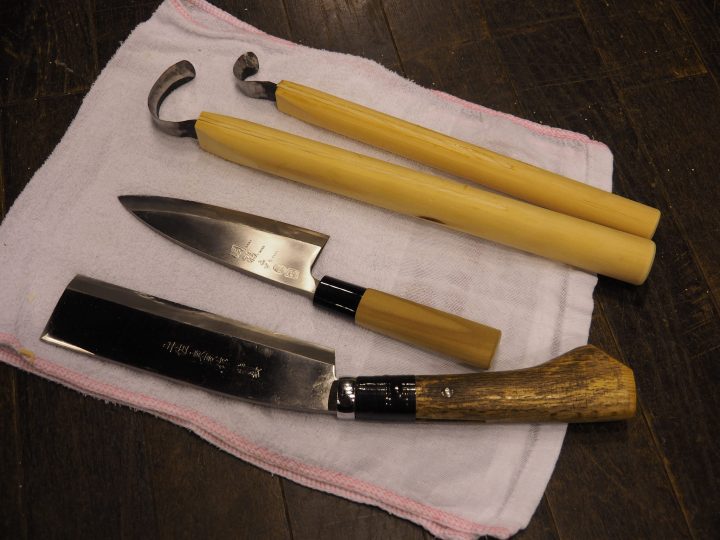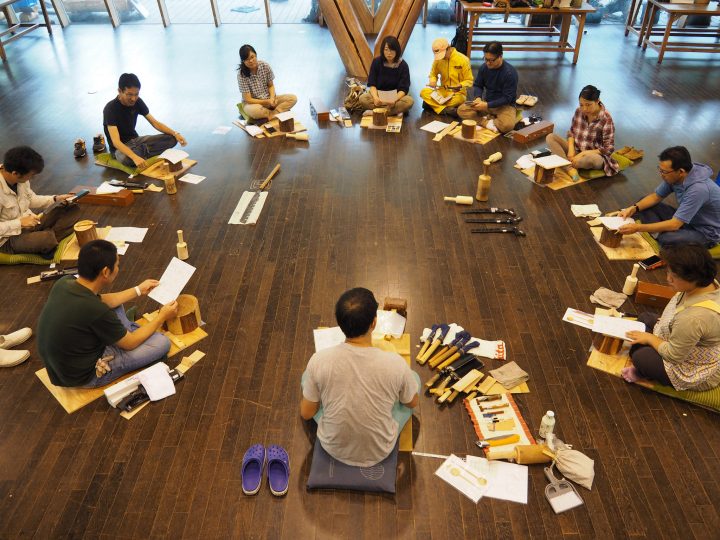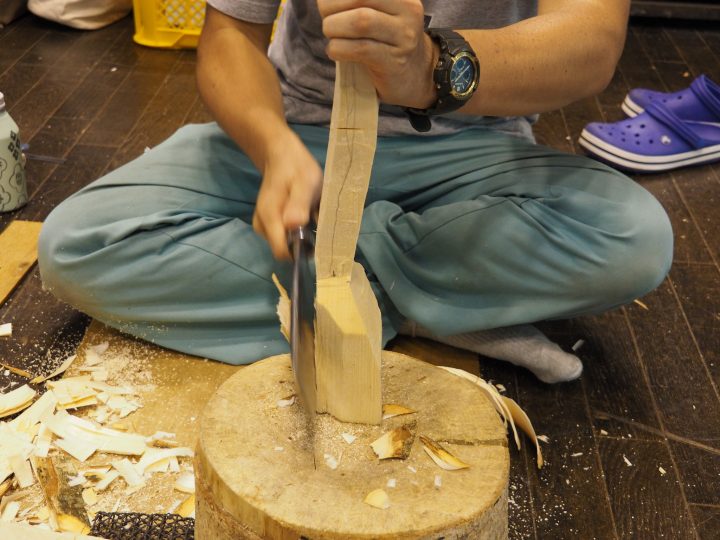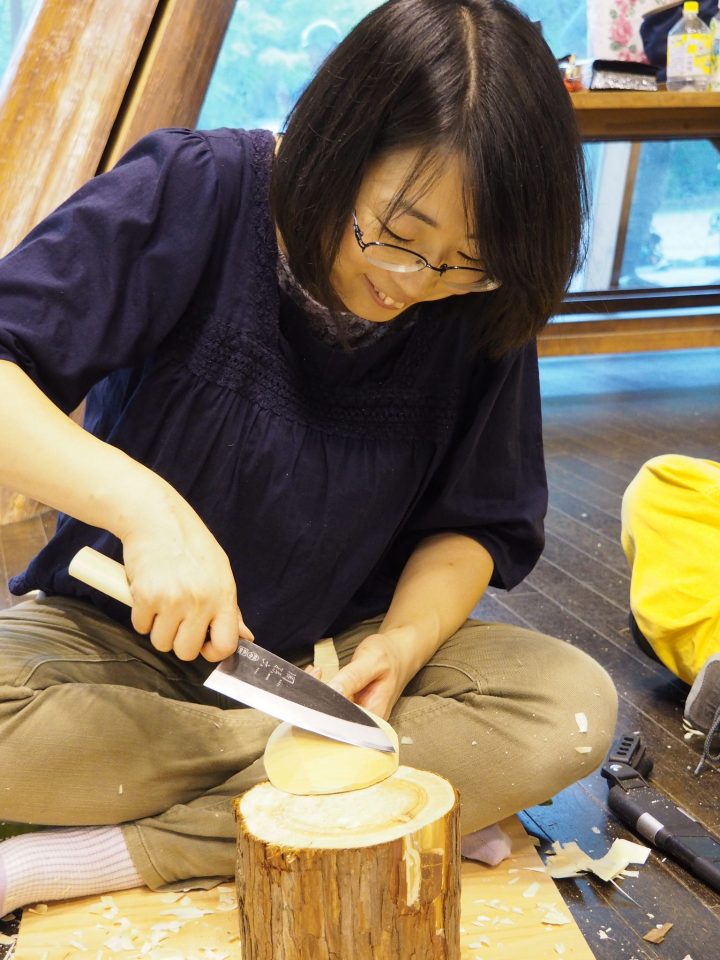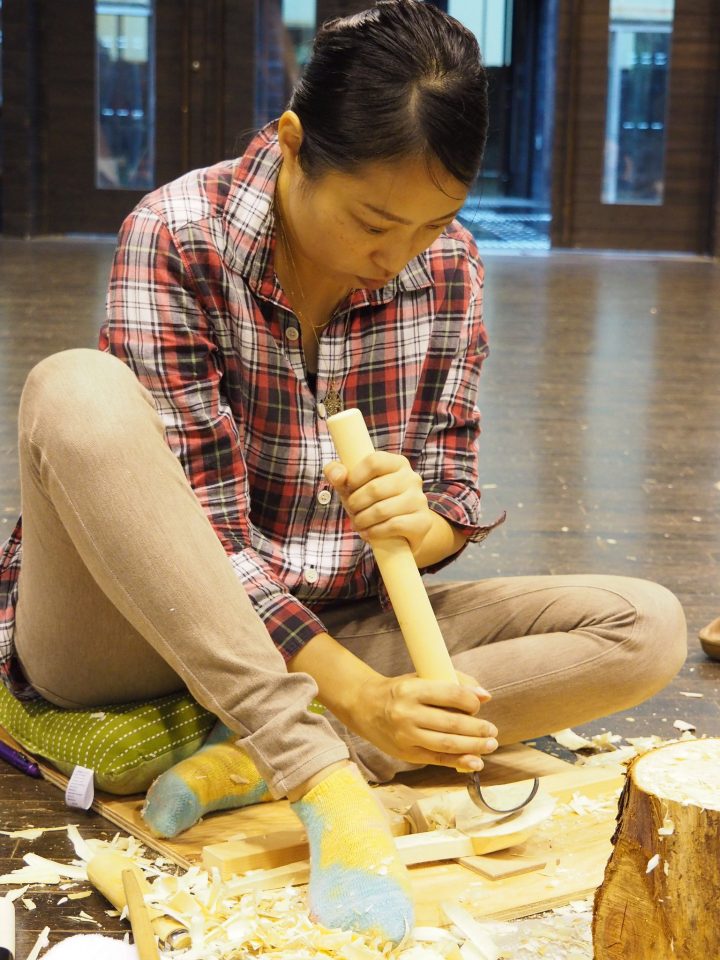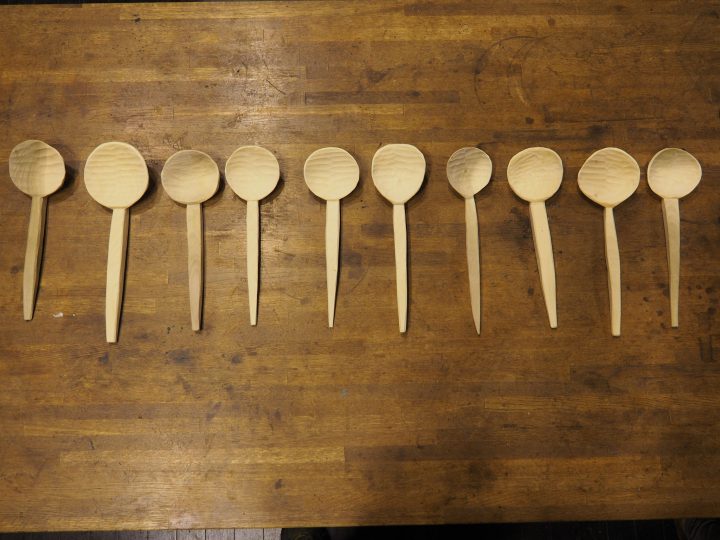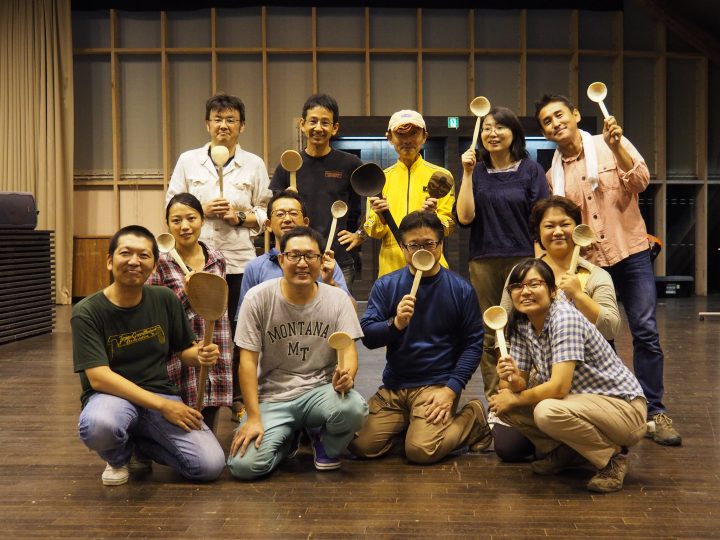有道杓子づくり〜日本伝統のグリーンウッドワーク
刃物の跡が鮮やかな、美しい木杓子。かつて岐阜県飛騨地方で作られていた、有道杓子です。
ホオノキを割り、鉈で粗く削り、出刃包丁で形を整え、杓子鉋(曲がり鉋)で刳って仕上げる、日本伝統のグリーンウッドワークです。グリーンウッドワークというとヨーロッパやアメリカの生木の木工と思われがちですが、日本でもかつてさまざまな暮らしの道具が生の木を削って作られていました。
日本のグリーンウッドワークに改めて注目し、みんなで楽しく学ぶ機会を作りたいと思っていたところ、若手の有道杓子職人さんとの出会いがあり、実現することになりました。
This beautiful wooden ladle is called ‘Utoh-shakushi’ (Utoh is the name of the village, shakushi is ladle), which used to be made in Takayama, Gifu prefecture. They were made from fresh magnolia wood (Magnolia obovata) using simple tools such as hatchets, a kitchen knife and ladle carving knives.
講師の奥井京介さん。関西の出身ですが高山に暮らし、8年前から有道杓子づくりを始めました。歴史や技術を詳しく研究されています。
有道杓子について、詳しくは奥井さんのウェブサイトをご覧ください。
(写真はホオノキにちなみ、高山名物の朴葉味噌を昼食にふるまってくれているところです)
In 19th century the whole village used to produce those ladles, but they deserted the village and the craft had died out. Recently Kyosuke Okui, a young woodworker from Osaka, learned the tradition from elderly craftsmen and started producing them in Takayama.
We invited Kyosuke as a instructor of 1-day ladle carving workshop at Gifu Academy.
(photo below: Kyosuke serves ‘grilled miso on magnolia leaf’, a traditional food in Takayama)
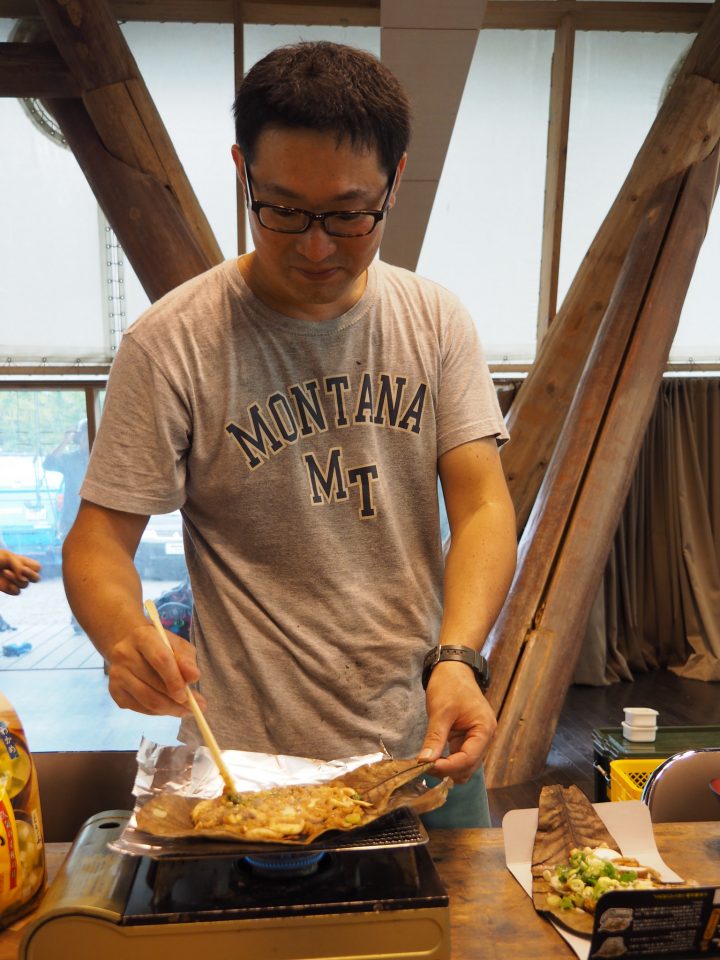
奥井さんが持参してくれた、高山の土産物店がつくる杓子。天狗の長い鼻に見立てています。
Kyosuke brought some of his ladle collctions. ‘Tengu’or ‘long‐nosed goblin’ is painted on the back of ladles. They are made and sold at a souvenir shop in Takayama.
丸型と、ハマグリ型があります。今回は簡単な丸型を制作しました。
Two types of Utoh-shakushi. Round and shell shape. Those carving marks inside the bowl is the distinctive feature of Utoh-shakushi.
使う道具。手前から、鉈、出刃包丁、杓子鉋(曲がり鉋)の大小。ほかに丸太を伐るノコギリが要りますが、基本的にはこれだけです。非常にシンプル。調理道具を使うところに、この仕事がかつて農家の副業であったことをうかがわせます。
Tools for ladle making. Hatchets, a kitchen knife (a thick blade one for chopping fish bones), and ladle carving knives.
受講生は8人。日本の伝統工芸らしく、床に座って作業します。
All the students sat on the floor and held the workpiece with a foot. Traditional Japanese style.
まずは丸太を割る作業から。鉈を木槌で叩いて割っていきます(この作業では両刃の鉈を用います)。
本来、丸太を割るときは真ん中で割るのが基本。こうして端のほうに刃を入れると、だんだん割れ目が外側へ寄ってしまいまっすぐに割れないのですが・・・
Cleaving a log with a double beveled hatchet. He cleaves from the side of the log, not from the center, and put it upside down each time, to get a trapezoid-shape piece. The wider end becomes the scoop, and the narrower end is the handle.
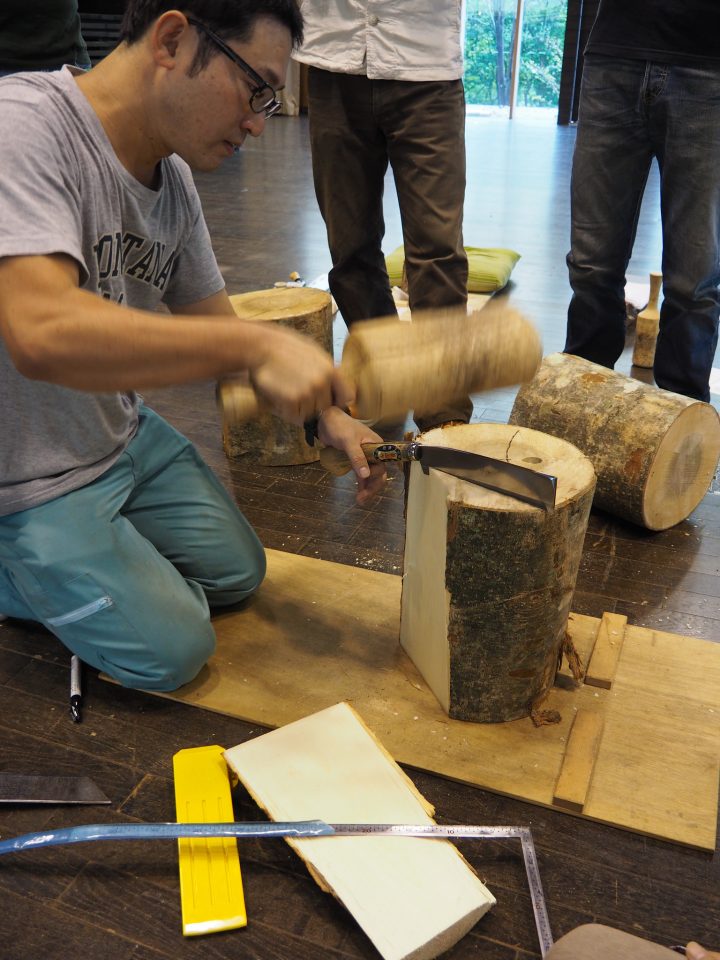
杓子づくりではそれを逆に利用しているのです。丸太をひっくり返しながら、台形のような形に割っていきます。幅の広いほうを匙面に、狭いほうを柄にするわけです。
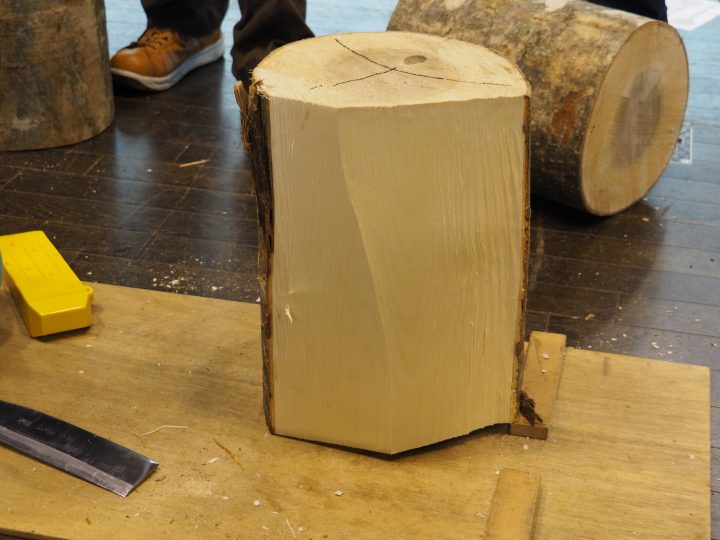
割れたら墨付けをして、鋸で切れ目を入れておいて、鉈で不要な部分をはつります(成形作業には片刃の鉈を用います)。
Roughing out with a single beveled hatchet.
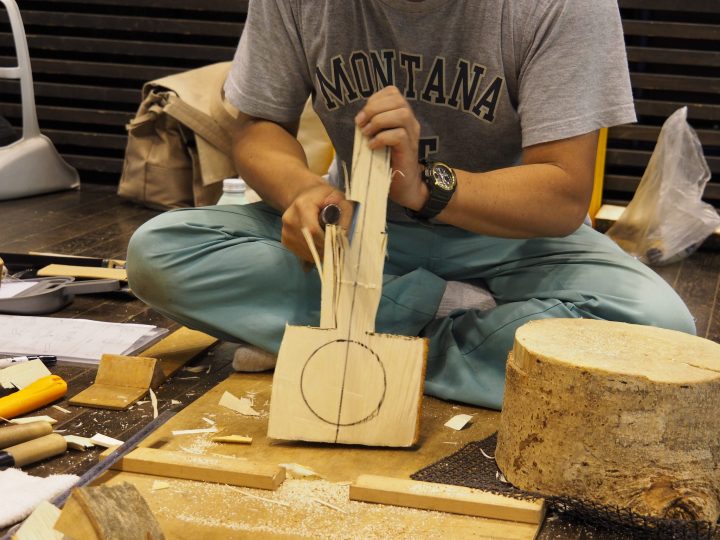
全体の形も、鉈で粗く成形してしまいます。感心したのが片刃の鉈の使い方。真っ直ぐに削りたいときは、平らな面(裏)を材に沿わせて削ります。しかし削る場所によっては、片刃では材料に深く食い込んでしまうことがあります。
For shaping the convex and straight part, he uses the hatchet with flat-side in.
そのようなとき(例えばカーブの内側を削るとき)は、ちょっと持ち方を工夫して、鉈の表(シノギと呼ばれる、角度のついた面)を材料にあてがいながら削るのです。こうすれば、材料に食い込むことがありません。
For shaping the concave part, bevel-side in, to avoid the hatchet from biting further into the wood.
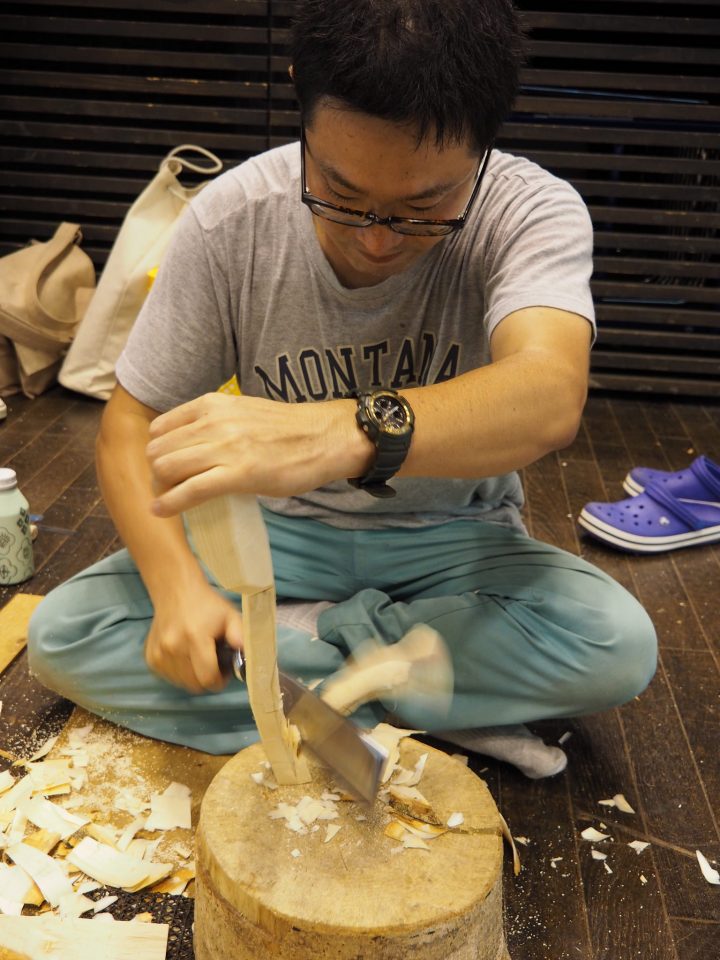
鉈での成形が終わったら、出刃包丁で形を整えます。ここで森の案内人こと森林文化アカデミーの川尻秀樹副学長が登場。出刃包丁を使うと聞いて、さっそく切れ味を試してみます。
After roughing out with the hatchet, carve the shape with the kitchen knife. The fact they used such tools for making crafts implies that it used to be a job for farmers in winter.
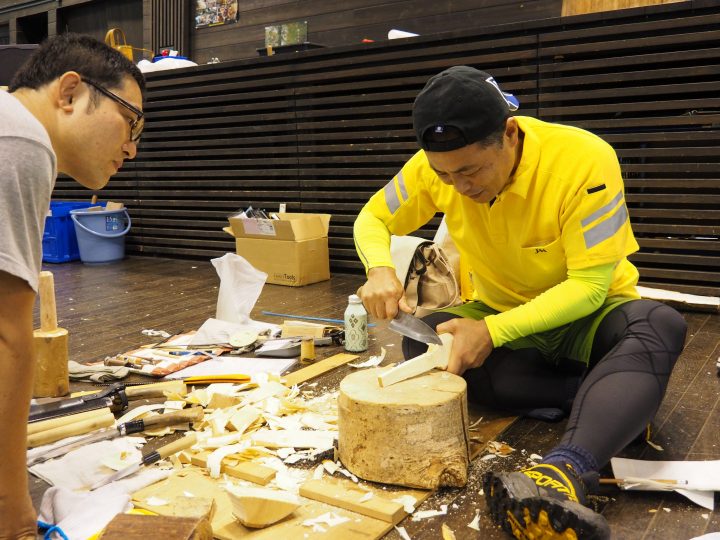
「おぉ〜サクサク切れる!」初めて味わう生木の感触、ちょっと感動する瞬間です。
Our vice president Hideki Kawajiri was impressed by the smoothness of the green wood and the effectiveness of the tool.
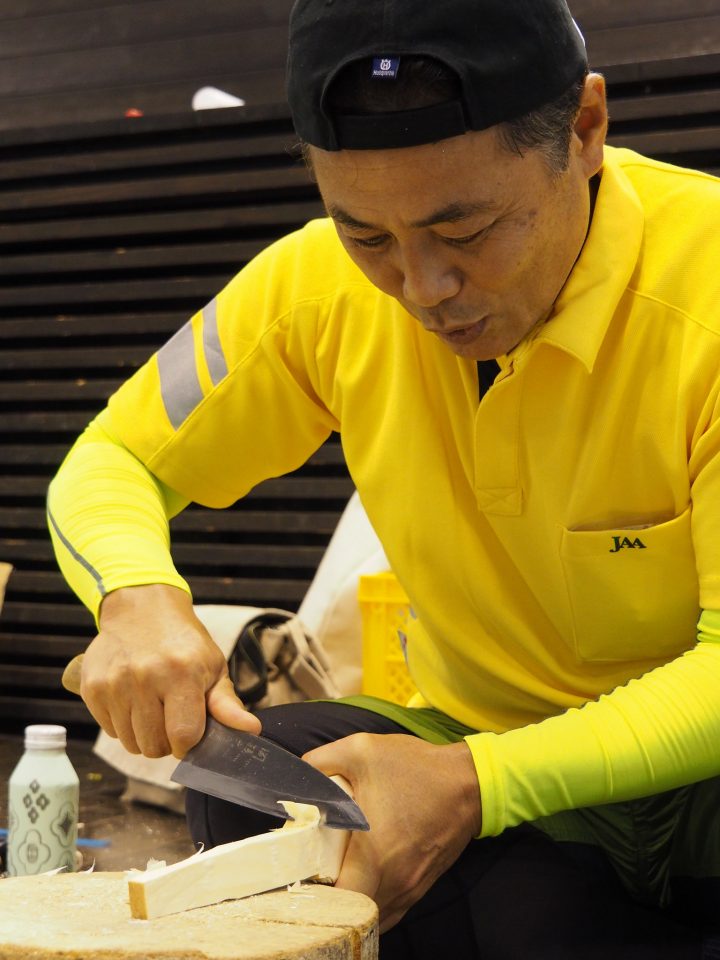
そして杓子鉋による削り。これは動画でないと分かりにくいので、動画を見てください。
For spoon carving knife, see the video.
受講生たちも、慣れない道具に戸惑いながら、杓子を作っていきました。
Each student tried those tools to make their own ladle.
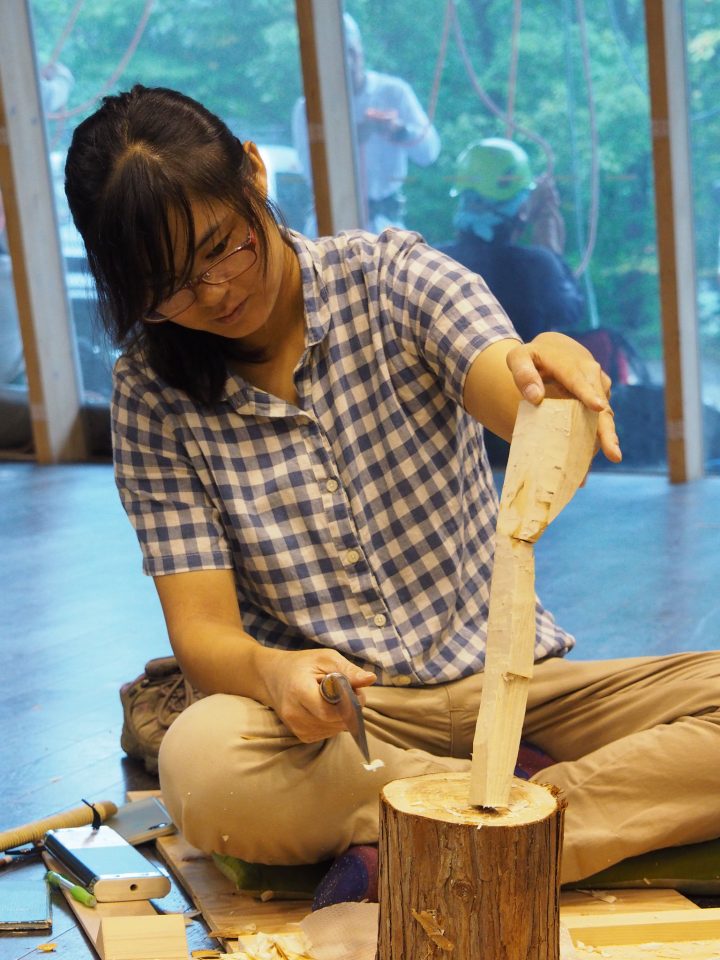
10時から始めて、午後5時にそれぞれ杓子が完成。真ん中(左から5番目)のが講師の奥井さんの見本です。
Here is the result. The 5th one from the left is by Kyosuke.
有道杓子は、産地だった集落が過疎化で消失していったん途絶え、後に近隣の住民が保存会を結成して技術を伝えてきたものの会員が高齢化して、存続が危ぶまれていたところでした。奥井さんという若い作り手が現れたことで、息を吹き返しました。今回のように作って楽しむ機会を設けることで、価値が見直されるきっかけになればと思います。
We raise the awareness of conserving the crafts, by working with those craftspeople to provide such making experience to the public.

